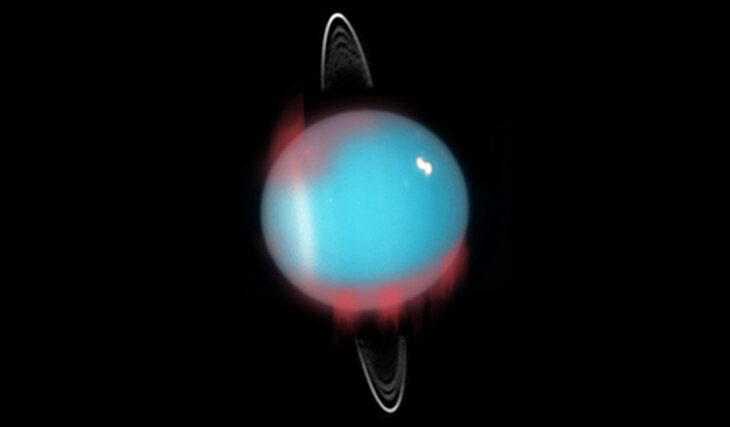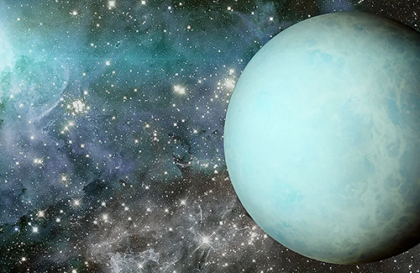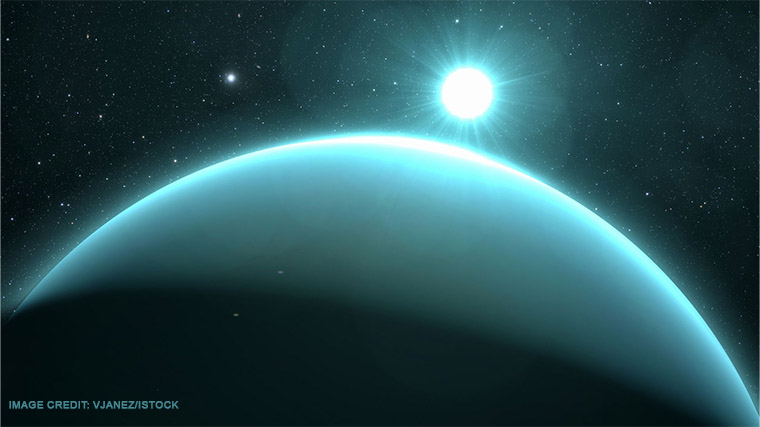Auroras on Uranus can provide clues to the internal temperature of the giant planets and the reversal of the Earth’s magnetic poles and suggest the presence of auroras on Neptune and exoplanets.
The aurora borealis is a natural phenomenon that occurs when charged particles from the Sun collide with atoms in the Earth’s atmosphere, creating colorful light. Unlike traditional auroras, which have primarily ultraviolet and visible light, the Uranian aurora has mostly ultraviolet and infrared wavelengths.
Astronomers have known about Uranus’ auroras observed in ultraviolet light since the 1980s. NASA’s Voyager 2 spacecraft first spotted them back in 1986. Now, for the first time, infrared auroras have been discovered on this planet by scientists from the UK using the Keck Telescope in Hawaii on October 26, 2023.
Infrared auroras on Uranus were recently observed for the first time using archival data from the giant Keck II telescope on Mauna Kea. This discovery significantly impacts our understanding of the planet’s atmosphere and magnetic field.
Uranus is the seventh planet from the Sun and the third largest planet in our solar system. It is an ice giant with a deep atmosphere composed mainly of hydrogen and helium and is known for its unique tilt. Uranus rotates on its side, with its north and south poles nearly in the plane of its orbit, resulting in extreme seasons that last decades. The planet’s magnetic field is also tilted, causing its auroras to be near the equator rather than at the poles.
Infrared radiation from the planet hits the tropopause, which allows scientists to determine the effective temperature of the planet. In addition, observing infrared auroras on Uranus opens up new opportunities for studying the planet’s magnetic field and its interaction with the solar wind.
The Hubble Space Telescope observed the aurora in the ultraviolet and visible spectrum, while the Keck Observatory detected the aurora in the infrared spectrum. Combining these observations allowed researchers to identify the aurora and study its properties.
The cause of infrared auroras on Uranus is still not fully understood. However, they are believed to be the result of the interaction of charged particles of the solar wind with the planet’s magnetic field. The interaction between the charged particles and the magnetic field causes the particles to spiral along the magnetic field lines, creating the faint glow of the auroras.
NASA’s James Webb Space Telescope captured this stunning view of Uranus on February 6, 2023. Credit: NASA/ ESA/ CSA/ STScI/ J. DePasquale (STScI).
Infrared auroras occur because Uranus’ atmosphere, composed primarily of hydrogen and helium, causes light to be emitted outside the visible spectrum in the infrared region.
Interestingly, the temperatures of gas giants, including Uranus, are much higher than expected, and one theory attributes this to additional heat from energetic auroras spreading heat toward the magnetic equator.
The detection of infrared aurora on Uranus may indicate similar phenomena on Neptune due to their similar magnetic fields. No auroras have yet been found there. Scientists speculate that this may be due to the colder upper atmosphere or periods of observation when there were no auroras on Neptune.
Most exoplanets found are similar in size to Uranus and Neptune, suggesting parallels in magnetic and atmospheric features. Studying Uranus’ auroras could help predict the atmospheres and magnetic fields of similar exoplanets and their potential to support life.
Studying auroras on Uranus can help understand Earth’s geomagnetic reversals, when the magnetic poles switch places, providing vital clues about the impact such events have on Earth’s technology and magnetic field. On Earth, this is a very rare phenomenon, but on Uranus, it happens every day due to the unique misalignment of the rotational and magnetic axes.
Banner image: The darker red locations indicate confirmed aurora locations, with fainter red used to mark possible aurora locations. The red auroras are superimposed on a Hubble image of Uranus. This is the 1st time scientists have detected infrared auroras for Uranus, although they’ve known about ultraviolet auroras since 1986. Credit: NASA/ ESA/ M. Showalter/ Hubble/ University of Leicester.
Image credit:
https://earthsky.org


